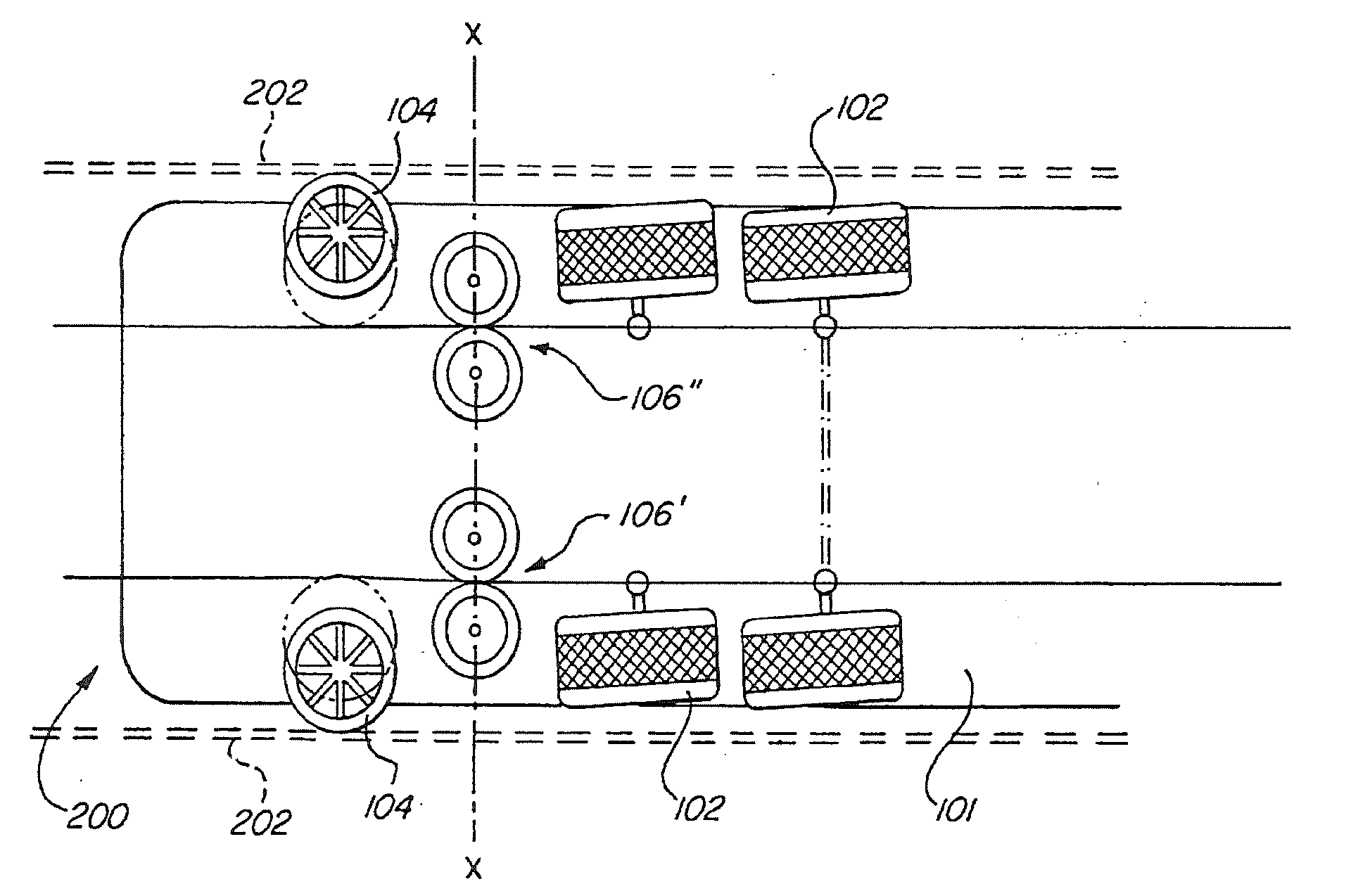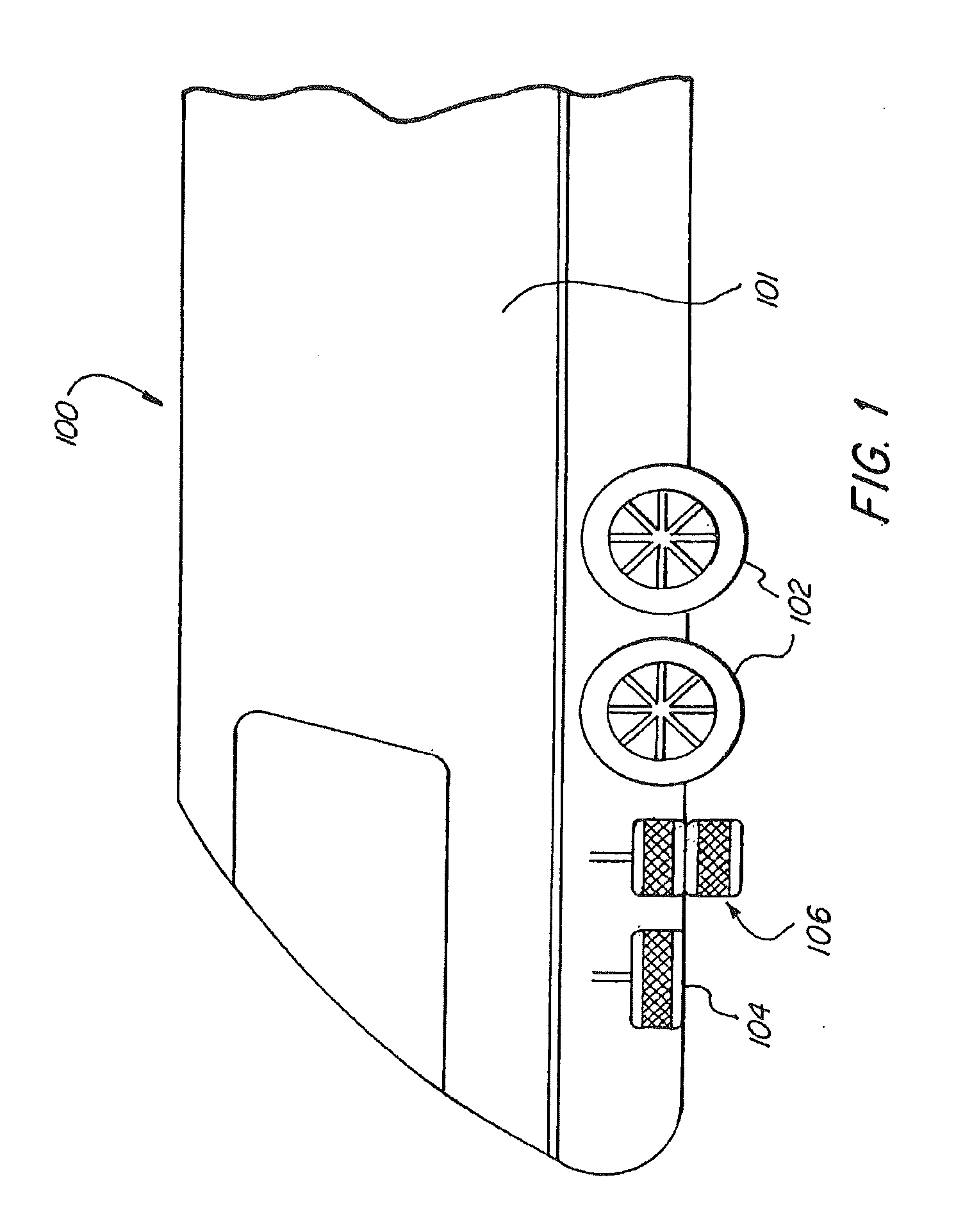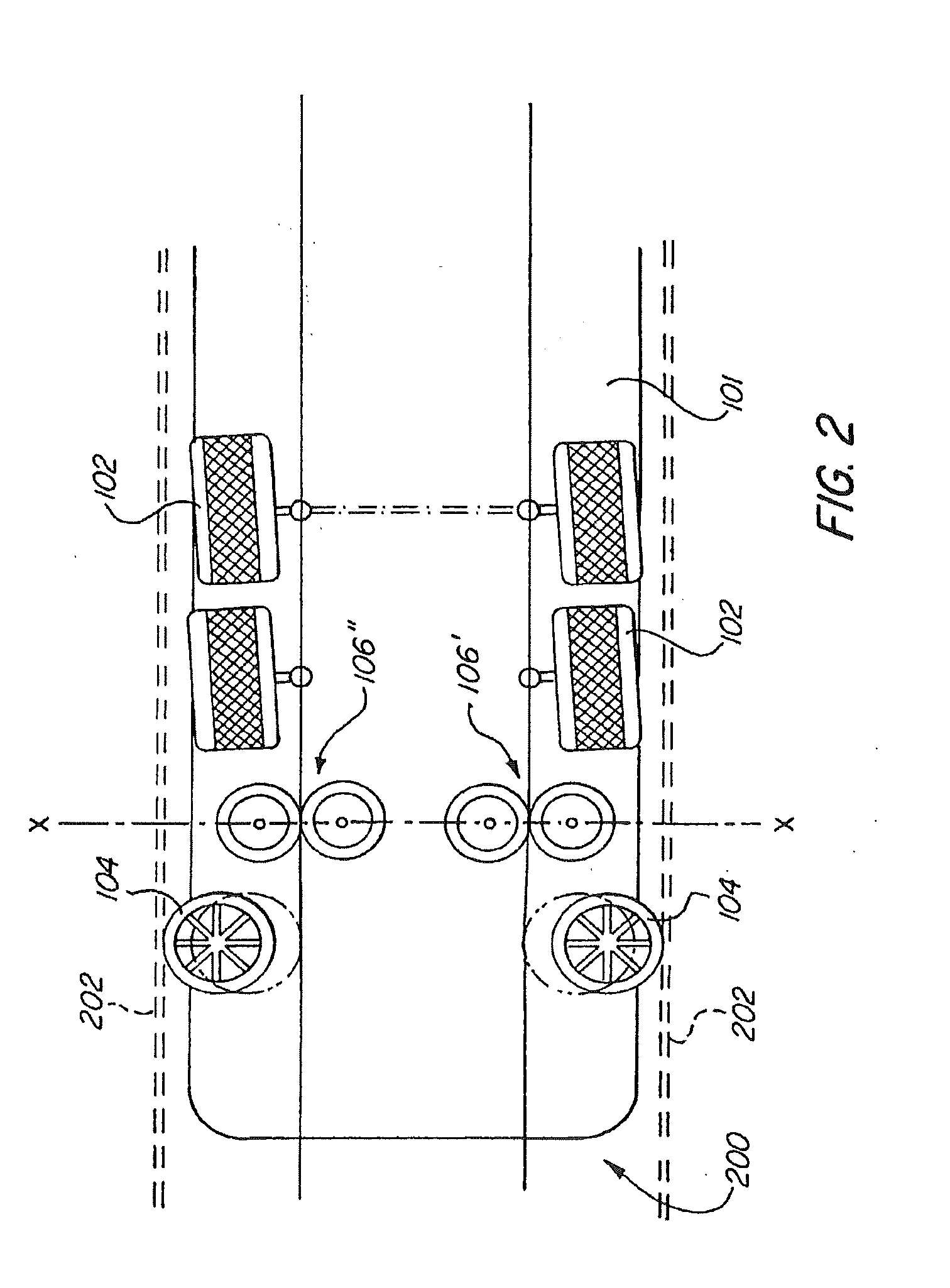Mass transit vehicle system
a mass transit and vehicle technology, applied in the field of mass transit vehicle systems, can solve the problems of limited willingness of many people to do, costing many billions of dollars annually, and traffic congestion is a significant problem, so as to and improve the speed of transi
- Summary
- Abstract
- Description
- Claims
- Application Information
AI Technical Summary
Benefits of technology
Problems solved by technology
Method used
Image
Examples
Embodiment Construction
[0031]Referring now to the drawings, wherein like reference numerals designate corresponding structure throughout the views.
[0032]FIG. 1 is an illustration of an advantageous embodiment of one end of a car 100 that may be used in connection with the present invention. It is contemplated that both ends of car 100 may be identical. Car 100 is depicted with a number of sets of wheels. For example, a set of two driving wheels 102 is illustrated to engage with the ground. It is contemplated that a total of eight driving wheels 102 may be provided at the corners of car 100 in a tandem arrangement. In this manner, not only is the weight carrying capacity increased, but in case one of the tires bursts, an additional wheel is provided to carry car 100 until car 100 can come to a stop for replacement of the damaged driving wheel 102. It is further contemplated that while eight driving wheels 102 are selected for an advantageous embodiment, any number of driving wheels 102 may be selected depe...
PUM
 Login to View More
Login to View More Abstract
Description
Claims
Application Information
 Login to View More
Login to View More - R&D
- Intellectual Property
- Life Sciences
- Materials
- Tech Scout
- Unparalleled Data Quality
- Higher Quality Content
- 60% Fewer Hallucinations
Browse by: Latest US Patents, China's latest patents, Technical Efficacy Thesaurus, Application Domain, Technology Topic, Popular Technical Reports.
© 2025 PatSnap. All rights reserved.Legal|Privacy policy|Modern Slavery Act Transparency Statement|Sitemap|About US| Contact US: help@patsnap.com



